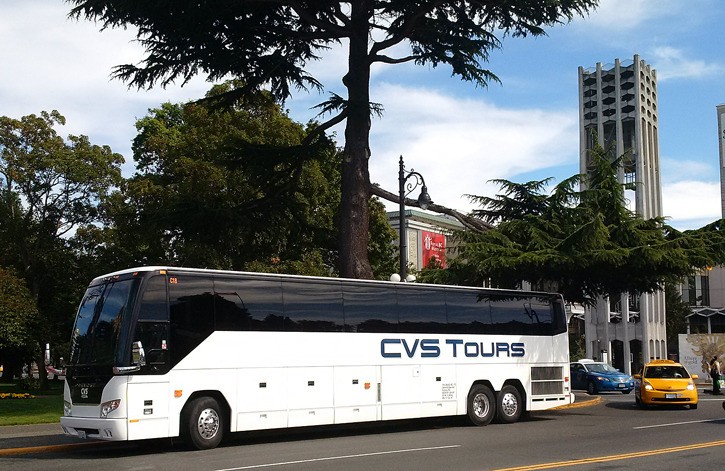A recent tour bus crash on the Coquihalla Highway that injured 30 passengers and threw the driver out through the windshield has prompted a review of motor coach safety in B.C.
One likely change is the requirement for seatbelts in motor coaches, which has been adopted south of the border. A 2013 survey of motor coach operators by the B.C. Trucking Association found that most B.C. companies support mandatory seatbelts, and many have already introduced them.
New U.S. government regulations take effect in 2016, requiring new motor coaches to have three-point lap and shoulder seat belts on passenger seats. The U.S. regulation does not extend to transit and school buses, and does not require retrofitting of existing buses.
Announcing the safety review Thursday, Transportation Minister Todd Stone referred to the June 27 collision on the Coquihalla Highway, and another on the same highway a year earlier.
Stone stressed that these incidents are rare, and commercial vehicle crashes in B.C. have declined by 24 per cent in the past decade, thanks to strict licensing and vehicle inspections.
Stone said the review will look at other measures such as mandatory rest periods for drivers.
Doug Switzer, CEO of national industry group Motor Coach Canada, said most safety regulations are set by the federal government, and consistent from province to province. He said the Canadian industry supports introducing seatbelts.
“Whether or not people will wear them is another issue, but we would certainly support making seatbelts mandatory on all new coaches,” Switzer told CBC radio. “That’s probably the biggest thing we can do to reduce the impact of collisions when they do occur.”
One issue for the industry is enforcement, and whether the driver can be ticketed if bus passengers don’t wear their seatbelts.
Transport Canada’s position has been that school buses are safe with closely spaced, high-back seats that reduce passenger impact in collisions.
